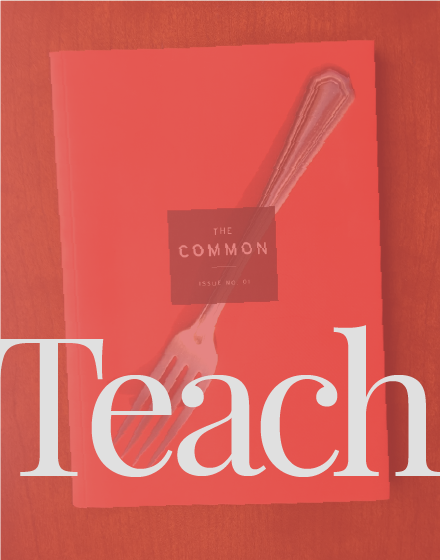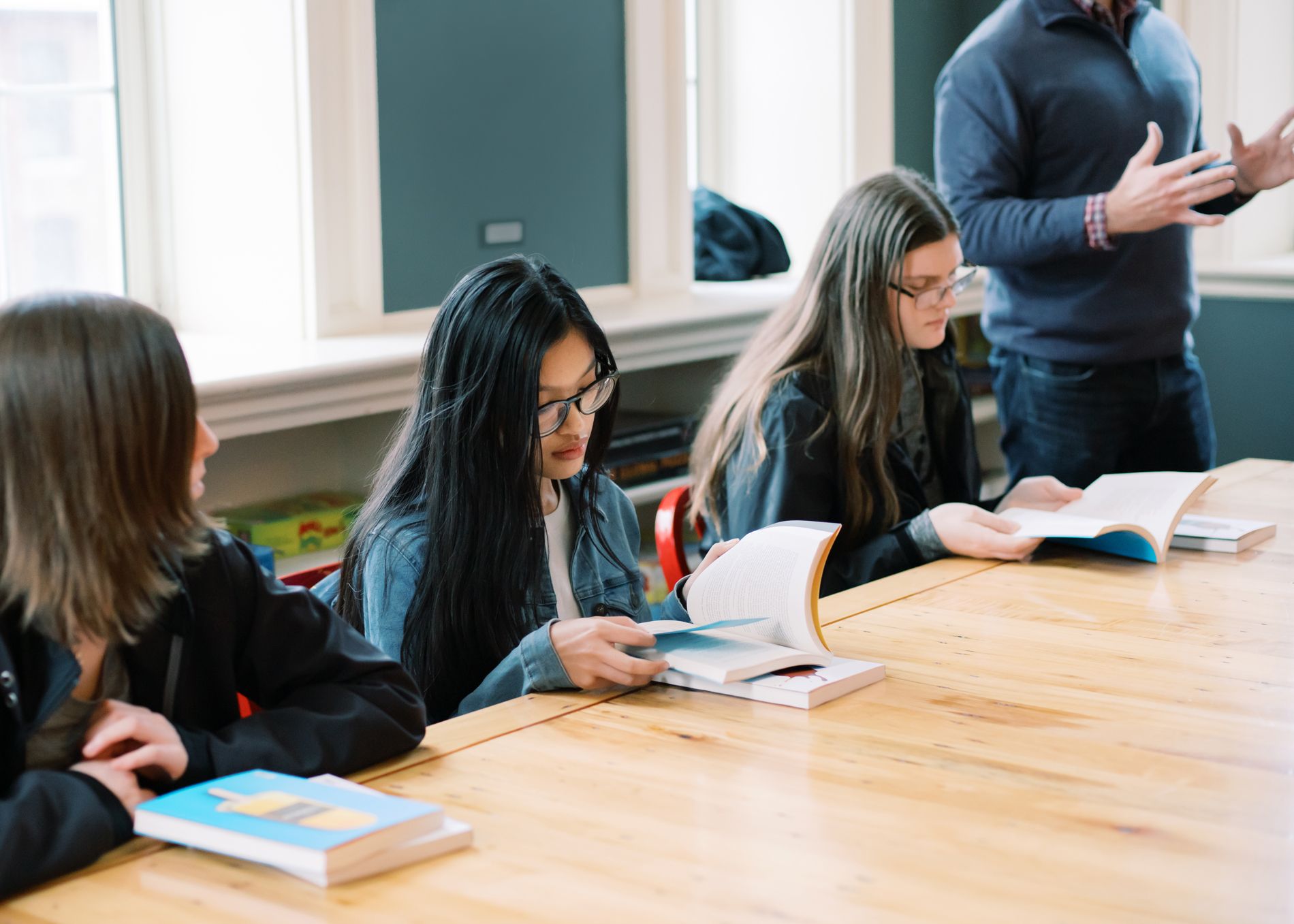Learn more about teaching The Common and request a free sample issue.
World Literature: Arabic Literature in Translation
Adapted from Marilyn Sides, Senior Lecturer and Director of Creative Writing, in the Department of English and Creative Writing, Wellesley College
1) Read: Mohammed Rabie’s “Burdens,” Muhammad Khudayyir’s “The Hush Void,” and Mahmoud al-Rahabi’s “The Passing Carts,” as well as the “Contributor Notes” for these authors and their translators.
Consider/Discuss:
- What is each story about?
- What is particular about the style of each piece?
- What do these stories have in common? Consider themes (e.g., religion), style (e.g., allegory or parable), types of characters, settings, etc.
- Which one do you like the most and why? (The category of “like” is always complex: this could mean the story’s content, language, and/or tone please you, intrigue you, demand your attention or admiration, or…)
For further exploration: Read the following accounts of the relationship of world literature and the role of translation, and briefly outline or list the main “story” each tells (you can note similarities and differences).
- “On ‘World Literature’ and Translation” (AIETI: Asociación Ibérica de Estudios de Traducción e Interpretación)
- “What Is World Literature?” (Anis Shivani, The Missing Slate)
Write: One paragraph about the story from Issue 11 that you “like” most, explaining what you find particularly engaging, pleasing, challenging etc., about this story.
2) Read: The Issue 11 introductory essays by Youssef Rakha, “A Thousand and One Pebbles” and M. Lynx Qualey, “A Space for Dreaming,” as well as Rasha Abbas’ “Statement of Absolute Hatred,” Basma al-Nsour’s “Disappointments (and a Few Clarifications),” and Zakaria Tamer’s “Five Stories.” Also review the “Contributor Notes” for these authors and their translators.
For further exploration:
- Brief history and overview of Arabic literature (New World Encyclopedia)
- “Rasha Abbas, the ‘King of Cups,’ and How Literature Lags Behind Music” (M. Lynx Qualey, Arabic Literature (in English)); see also: video of Rasha Abbas and Alice Guthrie reading “The Gist of It”as well as of Abbas and Guthrie reading “A Plate of Salmon” (from “Syria in Words and Music”)
- “Zakaria Tamir, Practicing the ‘The Most Difficult Form of Literary Expression’” (M. Lynx Qualey, Arabic Literature (in English))
Consider/Discuss: In reading the background on Arabic literature, as well as the introductions to Issue 11, try to articulate:
- What is classical Arabic? Modern Arabic? What has been the tension between poetry and fiction in the Arabic literary tradition?
- How has Arabic fiction, in particular, reacted to the influx of Western (European and US) fiction from the 19th century up until the present?
- Why is there “a lack of Western interest in Arabic literature” according to Rakha? How does Qualey characterize this issue of The Common as a response to that “lack”?
Write: Pick one of the stories from Issue 11 and write a paragraph about how you come to read it in the context of the background readings.
3) Read: In Issue 11, read Mona Merhi’s “Haphazardia” and Malika Moustadraf’s “Just Different,” as well as the authors’ bios and those of the translators in “Contributor’s Notes.”
For further exploration:
- “‘New’ Arabic Writing: Cataclysm in Fast-Forward” (Hisham Bustani, one of the editors of Issue 11, The Common Online)
- “Middle Eastern Writers Find Refuge in the Dystopian Novel” (Alexandra Alter in the New York Times)
- “History of Censorship in Lebanon” (Mona Merhi, HowlRound)
- “Arab Women Writers” (Radwa Ashour, Mohammed Berrada, Ferial J. Ghazoul, Amina Rachid, and Mandy McClure, Southwest Review 94. No. 1. (2009); available via JSTOR by registering for a free MyJSTOR account)
Consider/Discuss:
- Think back to the works of the women authors you’ve read in Issue 11, in light of the “Arab Women Writers” essay—how do they seem a continuation of this history?
- Connect the Bustani and Alter essays to the stories you’ve read; what forces are driving “new”/contemporary Arabic writing? How can we reflect on them individually and together?
- Thinking about the essays by Merhi, Bustani, and Alter, how do the realities of political and religious censorship inflect almost all the stories we’ve read?
Write: one page comparing how these stories and the other stories in the issue highlight themes related to boundary crossings and national, cultural, and gender identities.
Learn more about teaching The Common and request a free sample issue.


